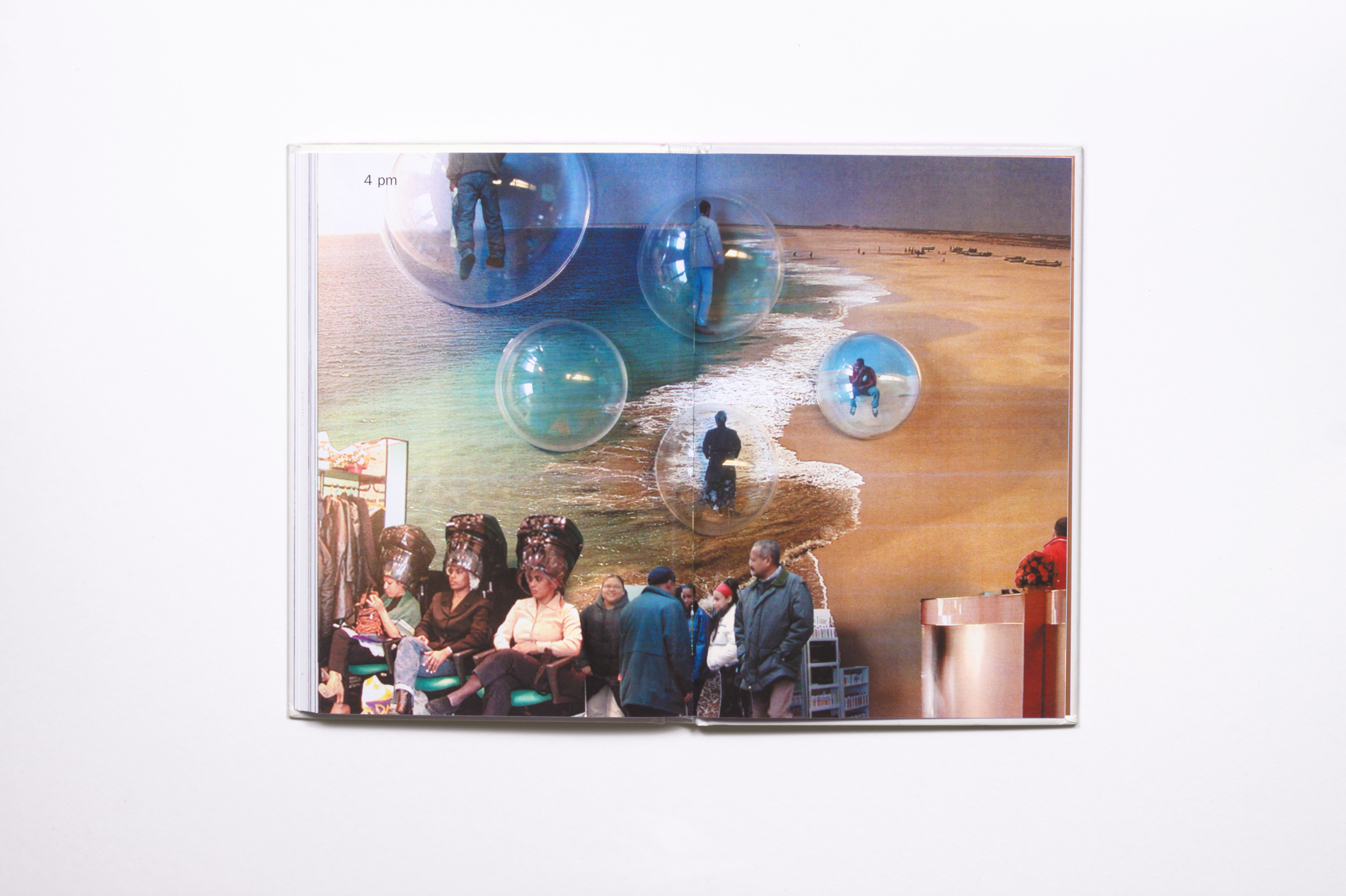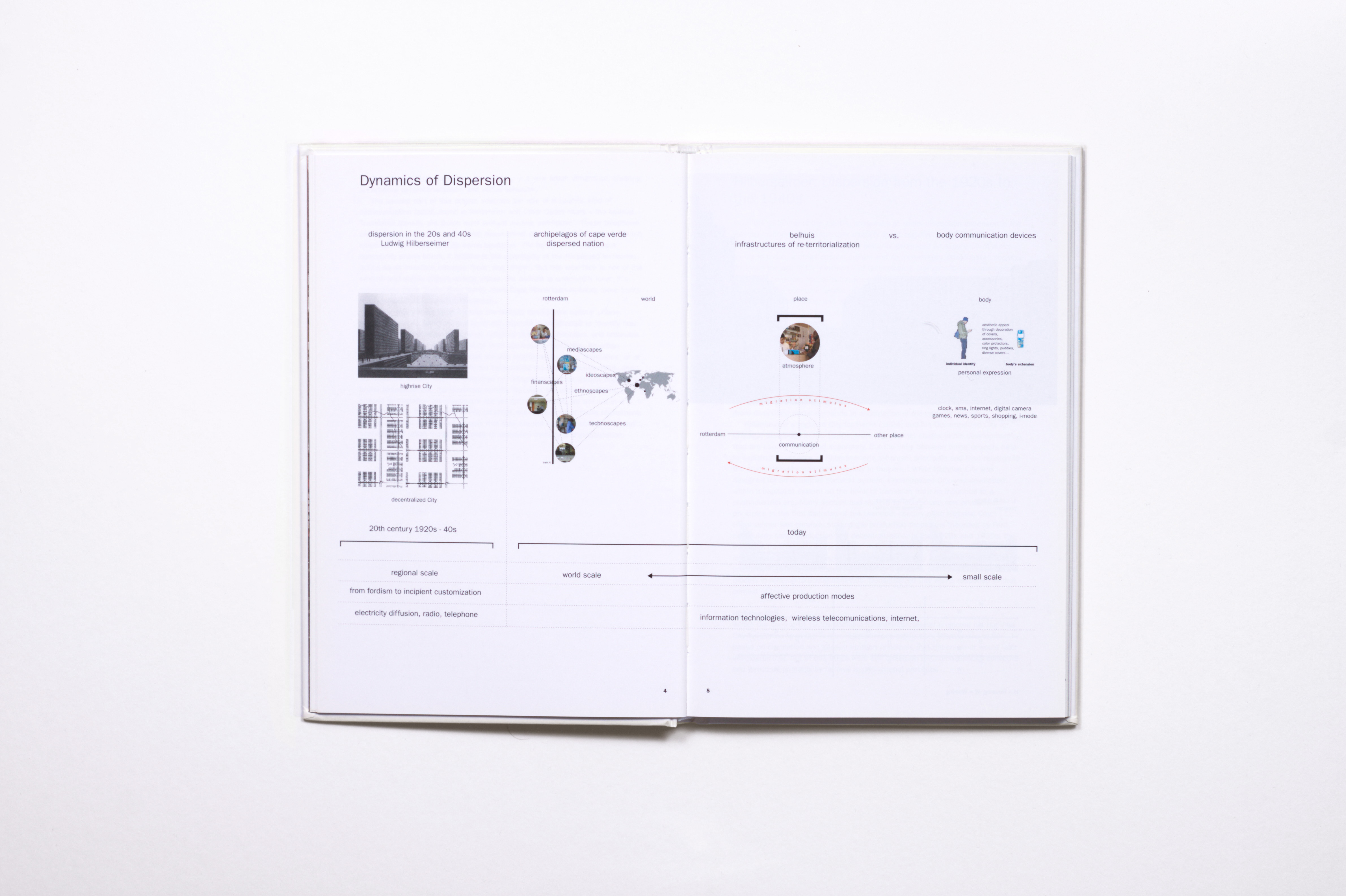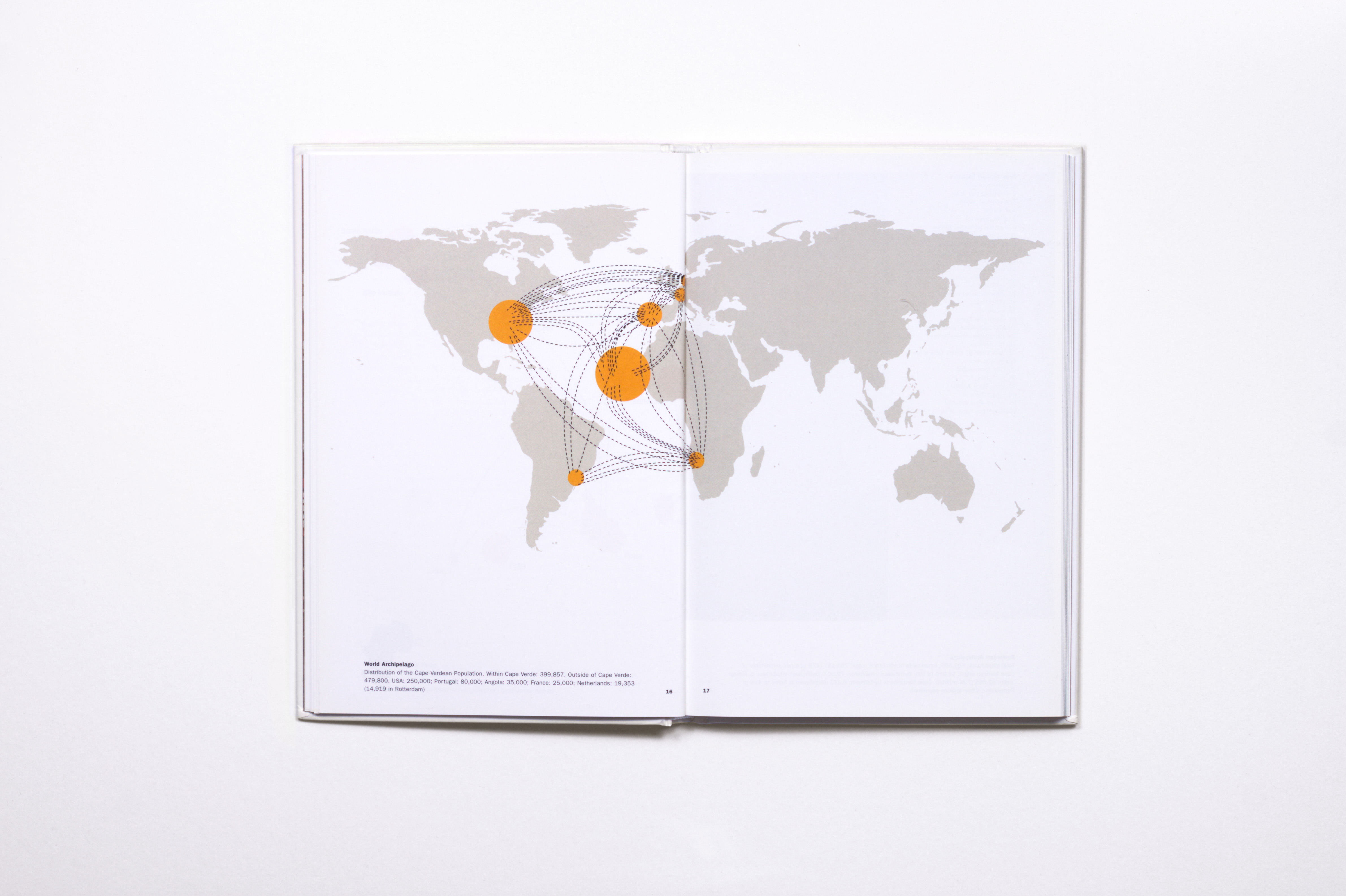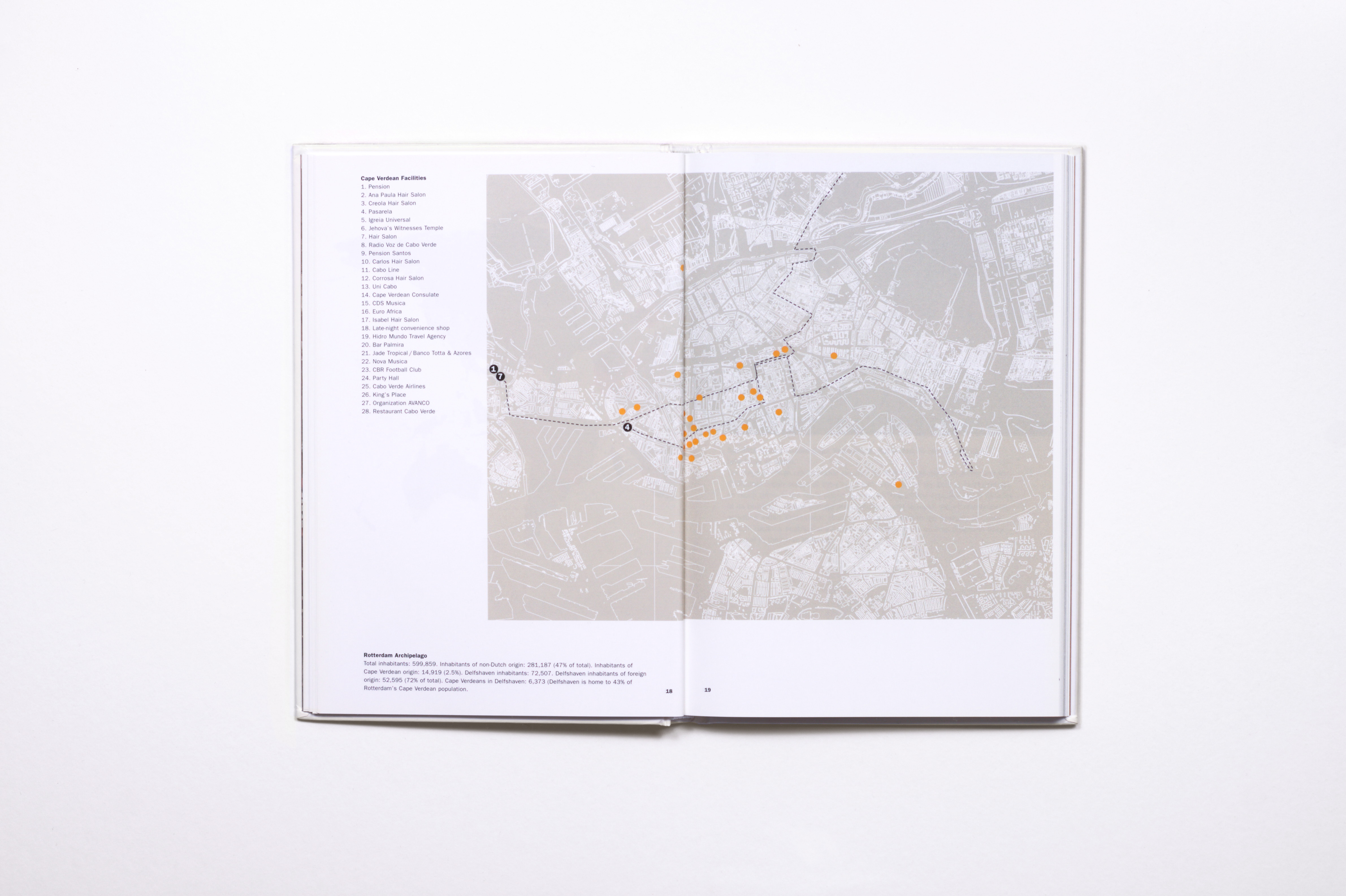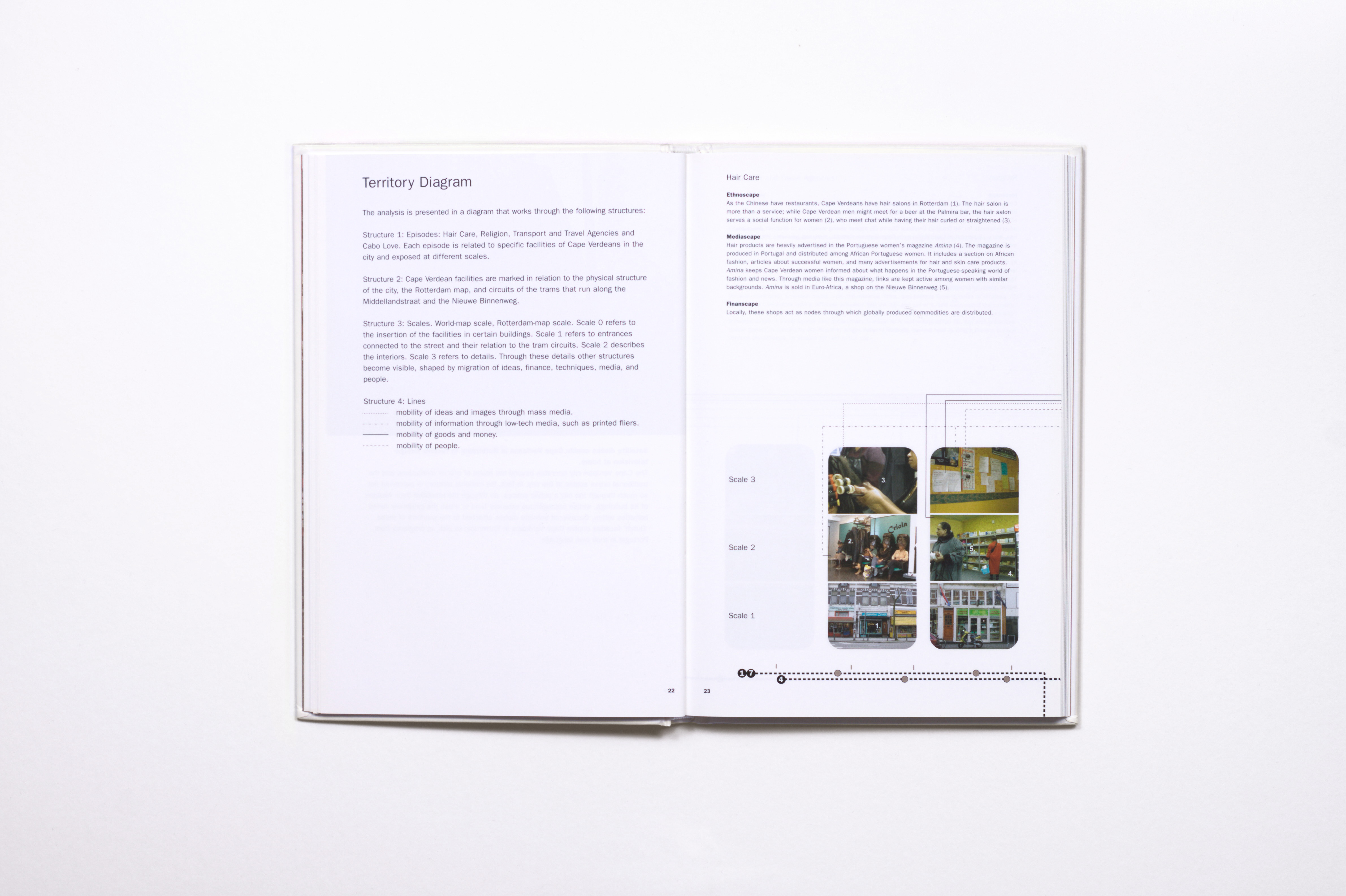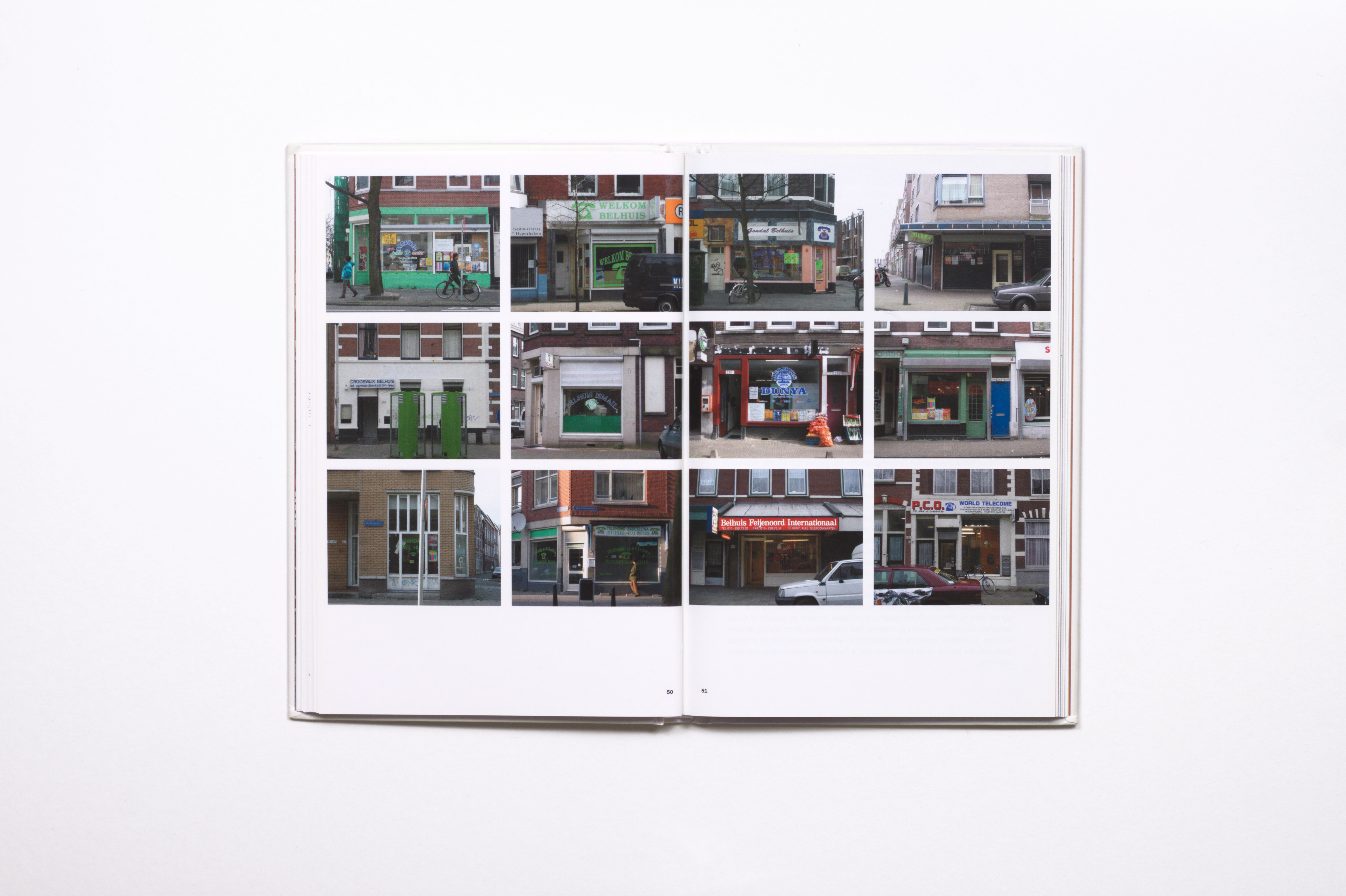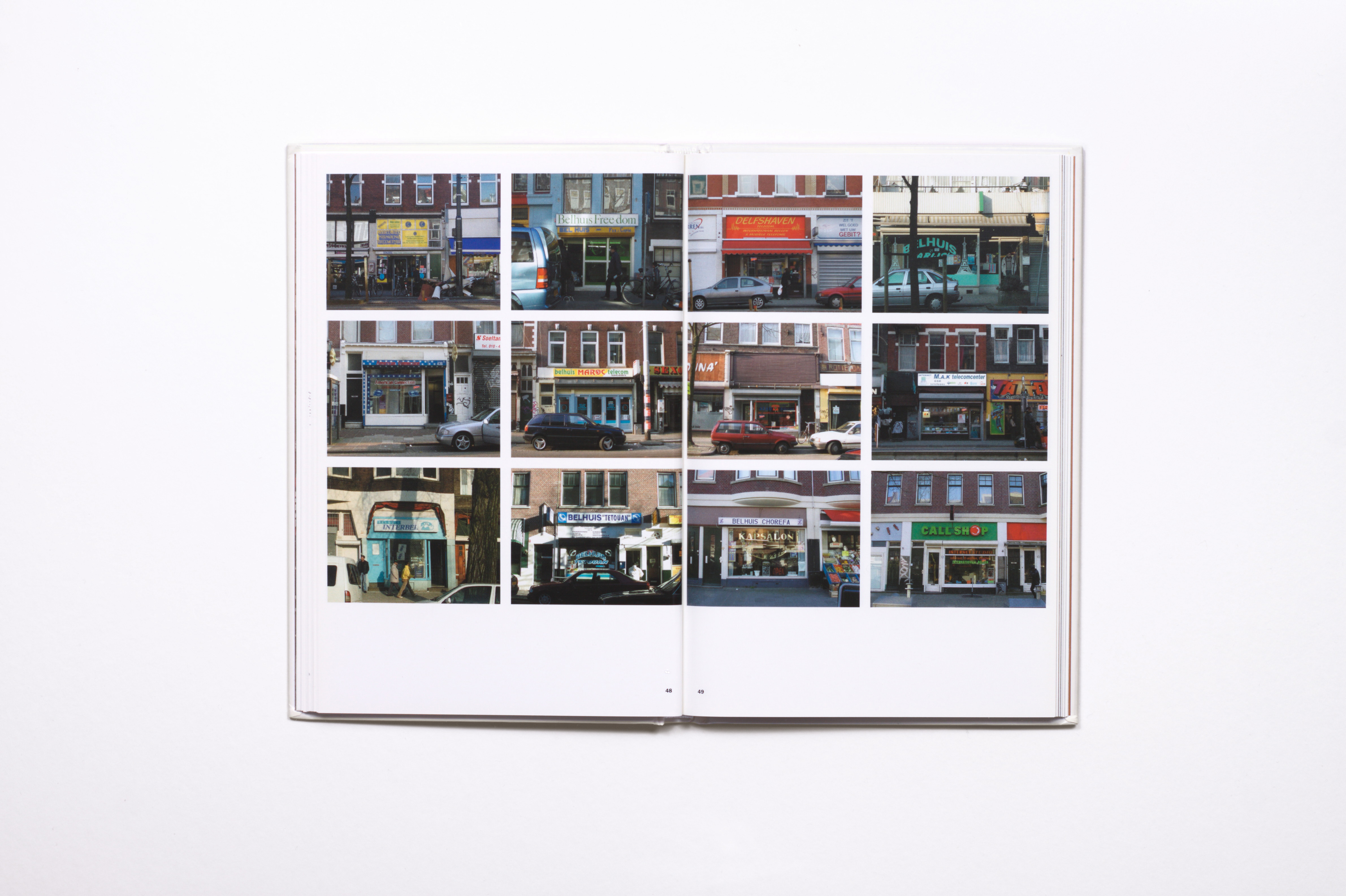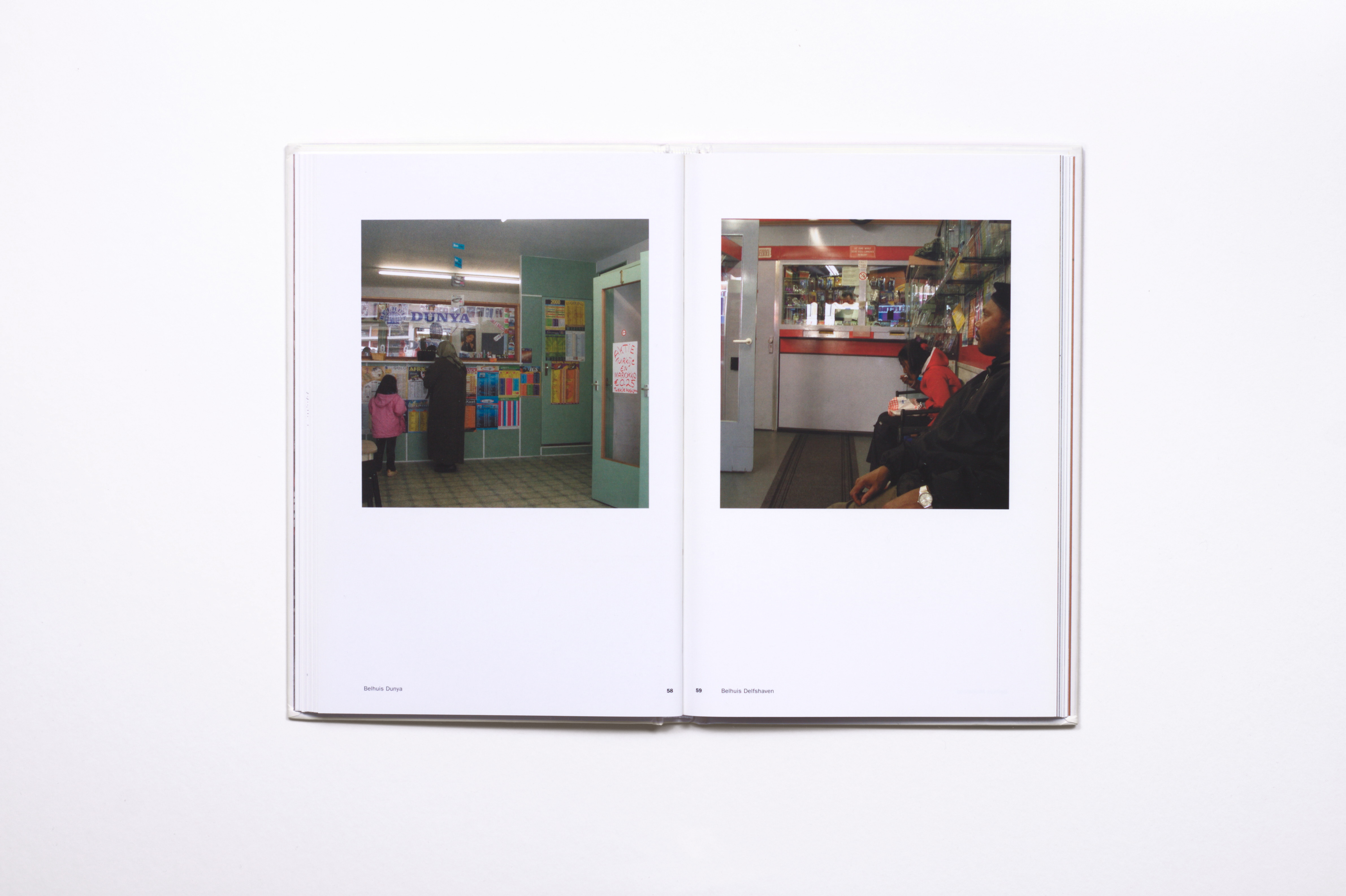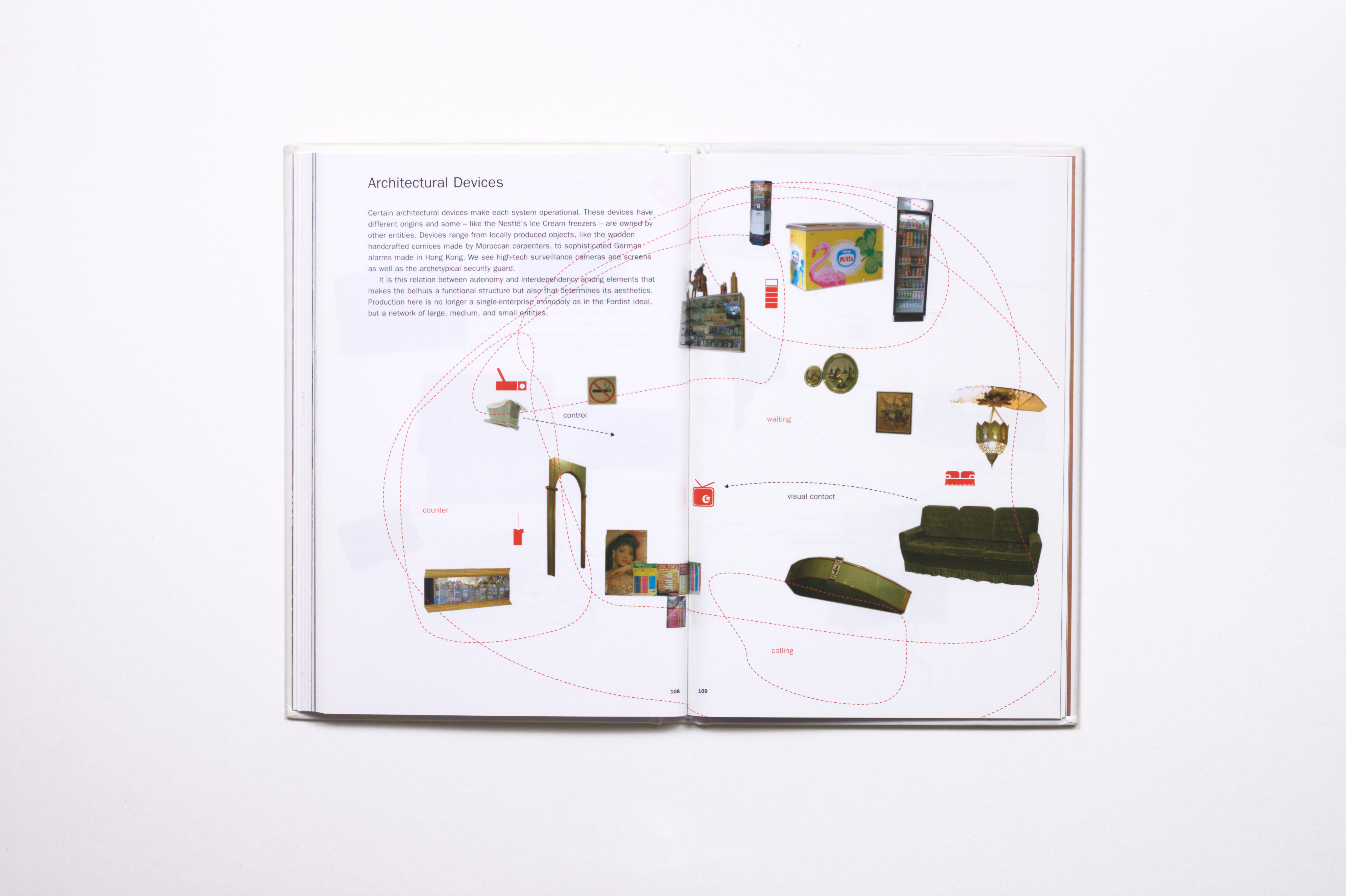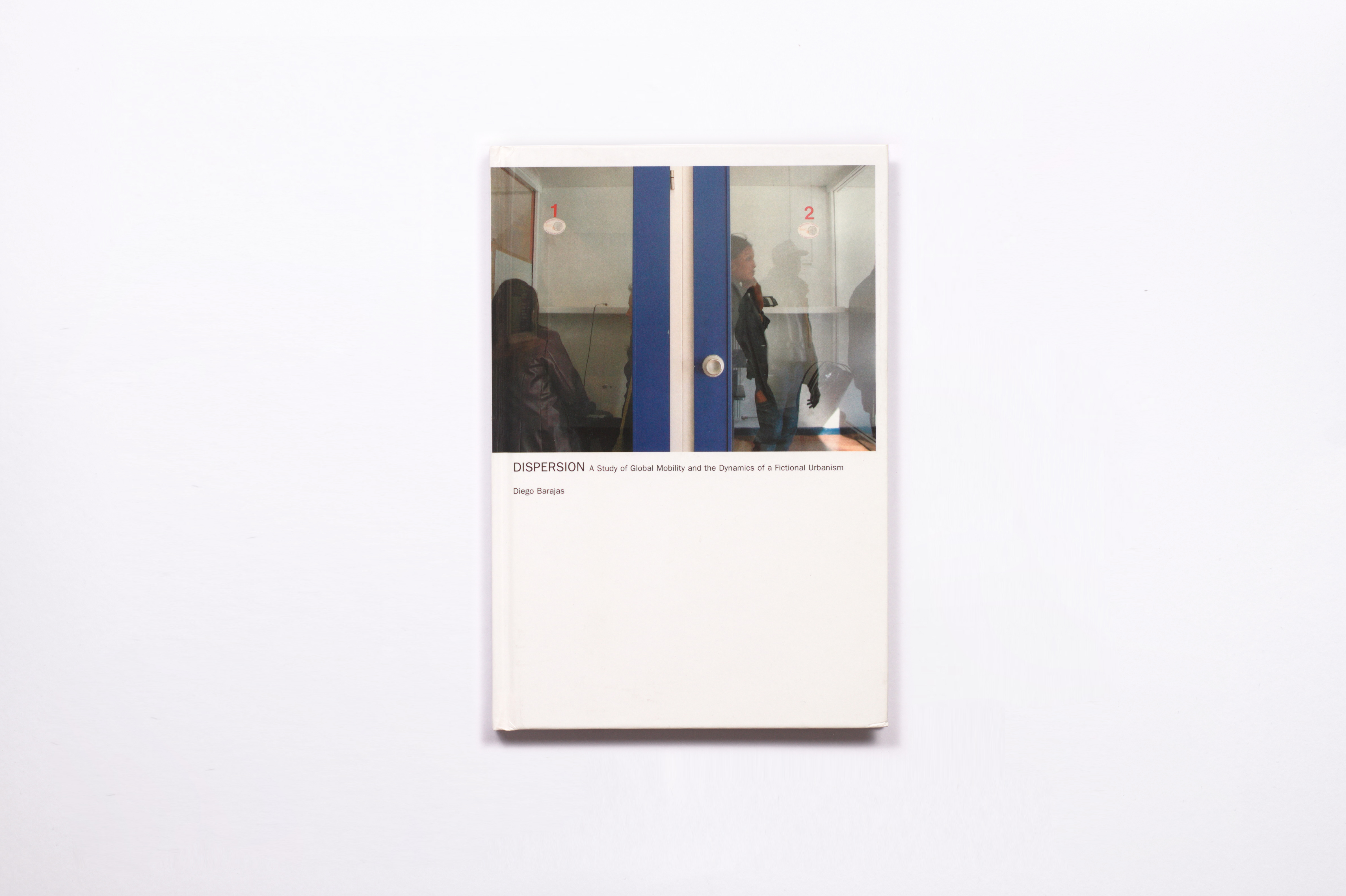>
Dispersión.
Estudio de movilidad global y dinámicas de un urbanismo de ficciones
Editorial Episode
Róterdam, Países Bajos
2003
This project studies global mobility and
territories in dispersion. By “territories in dispersion” I refer to social
habitats that are no longer physically contained in geographically continuous
areas, but have been spread out and re-articulated by artificial means.
The
de-territorialized condition created by increased mobility — particularly by
migration — had led to an urbanism of artificial re-territorialization. This is a fictional urbanism — as
based on mental but tangible constructions — that is manifested in the city as fragments,
micro-environments of global circuits, each of which establishes its own
identity, time, rules, and aesthetics — its own atmospheres. These fragments
are globally connected and articulated by abstract infrastructures like
telecommunications systems, as much as by physical places — ethnic shops,
religious centres, etc. — and by the imaginary and idealized realms through
which dispersed societies operate. This is an urbanism ruled by traditional
values, by intuitive and emotional forces, as much as by efficiency
This project argues that as patterns of dispersion
intensify, they generate not just fragmented societies, but a new territorial
cohesion — a realm in which the “the
collective” has gained a new dimension. Cultural identity is no longer
necessarily linked to geographical place, or to traditional territorial
structures like the nation-state, but has become a particular concept attached
to individual imaginations though subjected to and conditioned by the
contradictory pressures of self-determination and commoditization.
This
project is an attempt to trace the patterns of urban dispersals shaped by
migration to the city of Rotterdam — a city whose harbour has made it one of
the most concentrated points of settlement for Cape Verdean emigrants. As rates
of resettlement increase, simultaneous with technological advances in recent
years, cities like Rotterdam
operate through direct relationships between the global and the personal;
between world-scale social and economic networks and customized communication
devices like the cellular phone.
The implications of these networks are
drastically changing our understanding of urbanism, a field traditionally
limited to the architectural scales of the city. This project studies urbanism
through these different scales, investigating the new phenomena that take root
at their intersections. It examines the connection between architecture and
infrastructure within de-territorialization processes, and the redefinition of
the collective sphere through the close relationship between interior design
and urbanism.
As a basis for comparison, I have prefaced this
study of contemporary dispersion with a short analysis of Ludwig Hilberseimer
urban projects of the 1930s — modern urbanism’s response to the technological
advances and processes of dispersion that originated in the 1920s.
The
first part of this project concentrates on the territorial structure of the
Cape Verdean Diaspora. Very different from the notion of a nation as stable and
self-contained, Cape Verde
can be seen as a paradigmatic model of a dispersed community within advanced
globalization.
The disjuncture between the
Dutch territoryand the Cape Verdean
nationhas
resulted in an economic and spatial
reconfiguration of the Cape Verdean
territory in a new urban dimension, creating an artificial
re-territorialization and social cohesion.
The second part of this project analyzes the role
of a specific kind of communication facility found in Rotterdam and other Dutch
cities — the belhuis. Translated literally, the Dutch word belhuis means “call-house.” These
telephone centres serve as bases from which members of immigrant communities in
Dutch cities can make calls to their home countries. The belhuis is more than a
community phone booth: it facilitates the operability of the dispersed
territories, acting as an interface between “here” and “there.” But this interface is not of the smooth and
sterile airport variety; inside, the belhuis is undeniably local; it’s atmosphere more “there” than “here”; more Cape Verde than Holland;
more Santo Ántao
Island than downtown Rotterdam.
Finally,
this project looks beyond the belhuis itself to the cellular phone, analyzing
both its technical and aesthetic aspects in an attempt to identify new links
between production processes, industrial design, architecture, and urbanism.
![]()
![]()
![]()
![]()
![]()
Despite the increase of migration from non-western
societies, its urban consequences in the western world are still largely
regarded as anomalies, or at best “transitory conditions” within the
established models of development, and are often mentioned within a discourse
on “integration,” which usually implies a brutal absorption into the dominant
society. Because the urban conditions shaped by migration processes are not yet
fully understood, we are not in a position to reap their urban planning
potential. But an analysis of these phenomena from a different perspective
reveals that they are not marginal aberrations, but sophisticated urban models
in times of increased mobility and globalization.
Autor: Diego Barajas /
Edición de
texto: Jennifer Sigler /
Diseño gráfico: Joost Grootens /
Prefacio: Bart Lootsma /
Texto de contraportada: Catherine David

